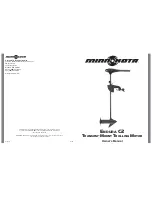
2
REVISION A 05/13/15
VERSACLOCK
®
5 - 5P49V5935/33 Evaluation Boards
OUT0 - This is a buffered output of the input reference clock, singled ended.
Power supply jack, J16 – Connect to 3.3V, 2.5V or 1.8V for the core voltage of the device.
CLKIN_S/CLKINB_S – SMA pair used to monitor the differential input CLKIN/CLKINB.
Differential Input clock connector – A differential clock can be connected as a source for the device.
5P49V5935/33 – the device to be evaluated.
XIN Connector – This SMA connector is for single-ended clock input. Please note the full swing of this input is 1.2V
maximum.
USB connector – Used this connector to connect with your PC to run IDT Timing Commander Software.
OUT1 /OUT1B – Output 1. It can be a differential pair or two individual single-ended outputs. By default, it's an LVPECL
differential output.
Output voltage selector – 4-way header to select an output voltage. The center pin is the output voltage. Use the jumper
to select from 1.8V, 2.5V or 3.3V. VDDO_J is the voltage from J15 (see E).
OUT2/OUT2B – Output 2. It can be a differential pair or two individual single-ended outputs. By default, it's an LVPECL
differential output.
Ground Jack – J17. If J15 and/or J16 is used for power supply, this jack is the power return.
OUT3/OUT3B – Output 3. It can be a differential pair or two individual single-ended outputs. By default, it's an LVPECL
differential output. (OUT3/OUT3B is not populated on 5P49V5933 EVB.)
Output Voltage Jack – J15. Connect to a voltage of 1.8V, 2.5V or 3.3V for output voltages.
OUT4/OUT4B – Output 4. It can be a differential pair or two individual single-ended outputs. By default, it's an LVPECL
differential output. (OUT4/OUT4B is not populated on 5P49V5933 EVB.)
Board Power Supply
• Core Voltages
The core voltage includes a digital voltage VDDD and an analog voltage VDDA. Both core voltages can be powered by an
external bench power supply or by USB.
Bench Power Supply
– To supply VDDD with a bench power supply, connect power to J16. To supply VDDA with a bench power
supply, connect power to J15. In the same time, place the jumpers in JP3 and JP5 to connect VDDA_J and VDDD_J, respectively.
USB Power Supply
– When the board is connected to a PC through a USB cable, on-board voltage regulators will generate a
3.3V for the device. In this case, place the jumpers in JP3 and JP5 to connect VDDA_REG and VDDD_REG, respectively. See
JP5 jumper position for VDDD_REG in the following figure. USB power source is recommended because it's readily available
right from your laptop.
1
2
3
4
5
6
7
8
9
A
B
C
D
E





























